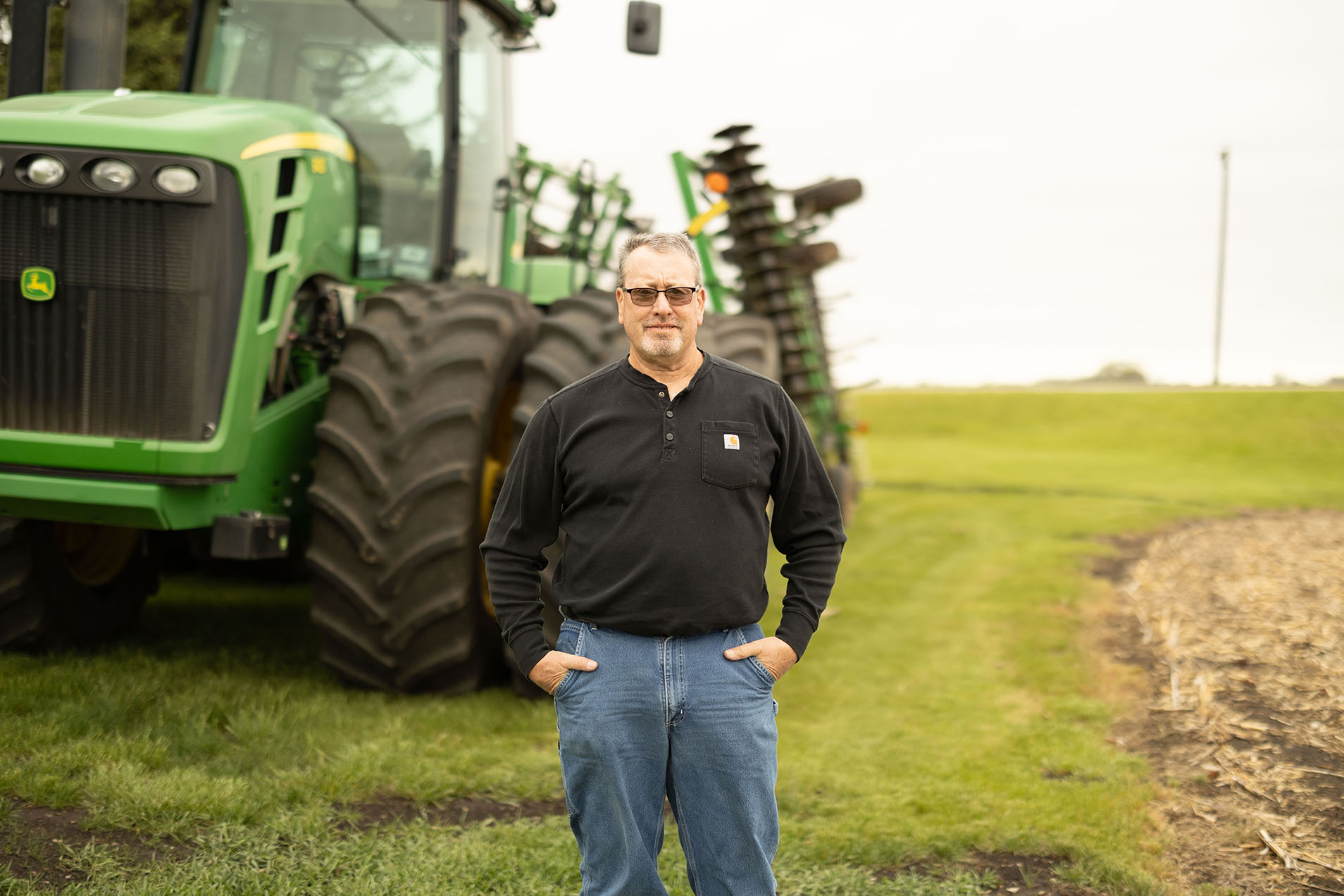
Iowa Soybean Association farmer-member Chuck Cleveland. (Photo credit: Iowa Soybean Association/Joclyn Bushman)
Lessons learned from the 2024 crop
March 31, 2025 | Kriss Nelson
For farmers starting the 2025 growing season, 2024’s most important lessons are centered around fungicide application, early soybean planting, and comprehensive risk management.
Iowa Soybean Association (ISA) farmer-members weigh in on what they learned in 2024 that they are bringing to the farm in 2025.
Dan DeVries (Prairie City)
“Through our fungicide trials last summer, we found that fungicide is a product we may not have to put on every year. ISA Senior Research Agronomist Alex Schaffer did an excellent job of scouting, providing updates after the application and gathering harvest data. There was very little disease pressure for the fungicide to be useful on. Harvest results showed fungicide may be unnecessary to use as an extra amount of insurance when you don’t need it. Yes, fungicides can be beneficial but don’t always show ROI. Fungicide needs to be a year-to-year decision, used when needed versus doing it every year, no matter what the cost, no matter what you see scouting.
This year, we are considering planting soybeans before planting corn. I think early planting of soybeans continues to be proven to provide maximum yield. You can still achieve high yields without early planting, but I think varieties of soybeans benefit from the extra growing season.
Last spring reminded us we can still have a successful cash crop planting soybeans green into waist-high cover crops. We shouldn’t consider cover crops a liability. I could not get my cover crops sprayed because of a two-week rainy spell in May. We had some soybeans planted in late April and early May, but we couldn’t finish planting until May 17; we also didn’t get the rye killed because of field conditions. Those soybeans planted into waist-high rye yielded just as well as those planted into terminated rye. This has happened to us before, so it’s not completely scary, but we still found it interesting. Although I kept my original herbicide program, the fields remained clean from weeds all season.”
Chuck Cleveland (Milo)
“Last year I applied Holganix Bio800, a biological for breaking down the extra residue I have on my fields from no-till. I am hopeful it will break down the residue, give me better seed-to-soil contact, and eventually reclaim some of the nutrients tied up in the residue so we can possibly cut back on some commercial fertilizer moving forward. We plan on making spring and fall applications of the product again and will do some soil and tissue sampling to see how it works.
I have also been experimenting with early planted soybeans. We planted 120 acres of soybeans before corn a few years ago and increased last year to 250 acres. We have seen positive results with a yield bump, so I may plant 60 to 70% of my soybeans first this year, depending on what Mother Nature gives us.
Looking back to the 2024 harvest, I am going to take a negative and turn it into a positive after a late-season hailstorm in October. I had already cut 160 acres of soybeans. They were high-yielding and I was very pleased. I still had a lot of soybeans left in the field and two fields I custom farm were looking to yield 75 to 80 bushels ended up making 45 bushels and another farm of over 100 acres yielded in the low 20s. Neither of us had hail insurance, and we haven’t carried any in years, but this year we looked closely at our protection policy options.”
Jeff Ellis (Donnellson)
“The primary management focus for me this year will be disease management. I have a feeling we will have to manage for tar spot. We scout our corn and typically spray fungicide only when necessary. 2024 was the first time we saw a large tar spot outbreak, and we found the disease on every acre of corn during last year’s harvest. We don’t think it reduced our yields because it came late in the growing season.
I have been planting our soybeans first for at least four years. I only have one planter, so I can only plant one crop at a time, but yield data proves earlier soybeans are better for us. We started planting soybeans around April 12 last year. Planting should have only taken a week, but it took a month because of rain. The earlier planted soybeans, by far, yielded the best and we saw our best soybean yields ever in 2024, but we saw a decline in yields in the later planted soybeans.
Early planting soybeans works best for our no-till operation, especially when it is a little cooler and wetter in the spring. Getting the soybeans planted sooner allows for better soil conditions, giving them an extra boost and allowing additional time for the soil conditions to improve, giving the corn a better start later in the spring.
Reflecting on last year, don’t underestimate our ability to grow a crop when it comes to making a marketing plan. We were able to produce a crop despite starting with some pretty rough conditions.
Before heading to the field this spring, I will be focusing on machine preparedness, ensuring everything is ready to go and taking some time to reeducate myself on operating some of the precision equipment.”
Contact Kriss Nelson at knelson@iasoybeans.com
Back